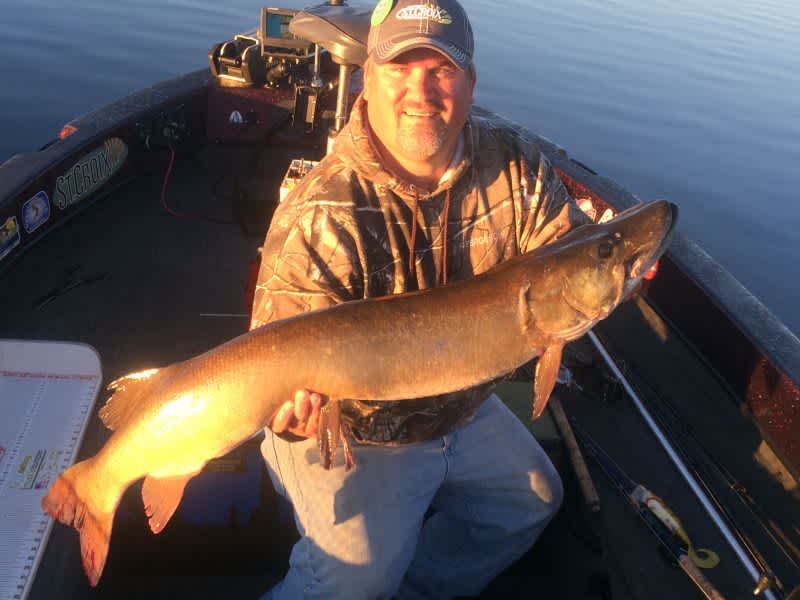10 Tips for Better Muskie Fishing with Live Suckers
Dave Maas 11.01.17

Sure, fall is hunting season, but for diehard muskie anglers, it’s also the best time of the year to target trophy fish. And one of the best methods to catch them is with live bait. If you’re new to the “sucker game,” check out the following 10 tips to increase your chances of boating a big autumn muskie.

- Always use high-quality quick-set rigs such as Herbie Rigs and the Shumway Clip N Go Sucker Rigs. Avoid using rigs that have a single large hook because hooking percentage is usually poor and the big hook can hurt muskies.

2. Instead of a rubber-core weight, use a sliding egg sinker weighing 3/4 to 1.5 ounces above your leader. During the fight, rubber-core sinkers often fly off, and they can cause line abrasion.
3. Use 30- to 36-inch fluorocarbon leaders (80- to 100-pound test) above the sucker rigs because you’ll get more hits. Always check your fluorocarbon leaders for nicks; if you see or feel a nick, replace the leader.

4. Use heavy-duty 8- to 10-foot trolling or downrigger rods with a medium-action tip. You want a rod with a strong backbone for a good hookset, but one with a softer tip. Don’t use stiff, pool cue XXH muskie rods. You need to maintain good pressure during the fight, and many times quick-set hooks are stuck only in the hard upper roof of a muskie’s mouth. Most good sucker rods are fiberglass and inexpensive.
5. Match your rod with a level-wind line-counter reel with a good, heavy bait clicker. Leave your reel on free-spool with the clicker on. I don’t always use a float when sucker fishing, and knowing the exact amount of line to let out is helpful. For example, it works well to let out 12 feet of line when fishing in 14 feet of water to hold the sucker off the bottom.

6. When using floats, use slip-floats with a bobber stop because it will be easier to fight a fish. Thill makes some large, skinny floats that work great. A clip-on style bobber gets in the way while fighting a fish and makes it difficult to net a boatside muskie.
7. When a muskie strikes your sucker, clear the other sucker lines quickly, make sure the muskie is swimming away from you, then set the hook quickly. This whole process should be fast because you don’t want a muskie to swallow the quick-set sucker rig. SET FAST!!!
8. Don’t set straight up on a muskie. Instead, make sure the fish is moving away and then sweep the rod quickly and to the side to set the treble hooks into the corner of a muskie’s mouth.
9. Use the right-size sucker for the lake. Ask your bait and tackle shop staff; on some lakes, big muskies prefer 10-inch suckers, while on other lakes they like 18- to 20-inch suckers. I use 13- to 16-inch suckers most of the time.

10. If you miss a muskie on a hookset and it’s still around, simply put the sucker back in the water and chances are good the fish will try to eat it again. Don’t tell yourself to “wait longer until he has it good this time” because the muskie will just swallow the rig and then you’ll have big problems. Get a good angle and set the hook – quickly – on the muskie again.

The goal is to land a muskie and then safely release it quickly after a couple of photos. Don’t hold a fish out of the water for too long or it can have swim bladder issues. Hold the fish horizontally with good support along its length. Always practice catch and release, and good luck this fall!

Editor’s note: If you’re ever in west-central Wisconsin and want to book a day of muskie fishing with Jason, check out the Jason Smith’s Guide Service Facebook page, or give him a call at 715-577-6236. Jason pursues muskies on the lakes and flowages in Chippewa and Rusk counties.

